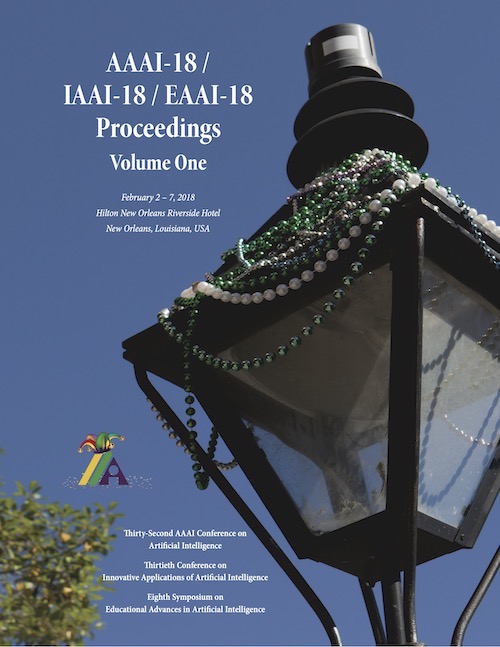Published:
2018-02-08
Proceedings:
Proceedings of the AAAI Conference on Artificial Intelligence, 32
Volume
Issue:
Thirty-Second AAAI Conference on Artificial Intelligence 2018
Track:
AAAI Technical Track: Robotics
Downloads:
Abstract:
There has been substantial work in recent years on grounded language acquisition, in which language and sensor data are used to create a model relating linguistic constructs to the perceivable world. While powerful, this approach is frequently hindered by ambiguities, redundancies, and omissions found in natural language. We describe an unsupervised system that learns language by training visual classifiers, first selecting important terms from object descriptions, then automatically choosing negative examples from a paired corpus of perceptual and linguistic data. We evaluate the effectiveness of each stage as well as the system's performance on the overall learning task.
DOI:
10.1609/aaai.v32i1.12108

AAAI
Thirty-Second AAAI Conference on Artificial Intelligence 2018
ISSN 2374-3468 (Online) ISSN 2159-5399 (Print)
Published by AAAI Press, Palo Alto, California USA Copyright © 2018, Association for the Advancement of Artificial Intelligence All Rights Reserved.
